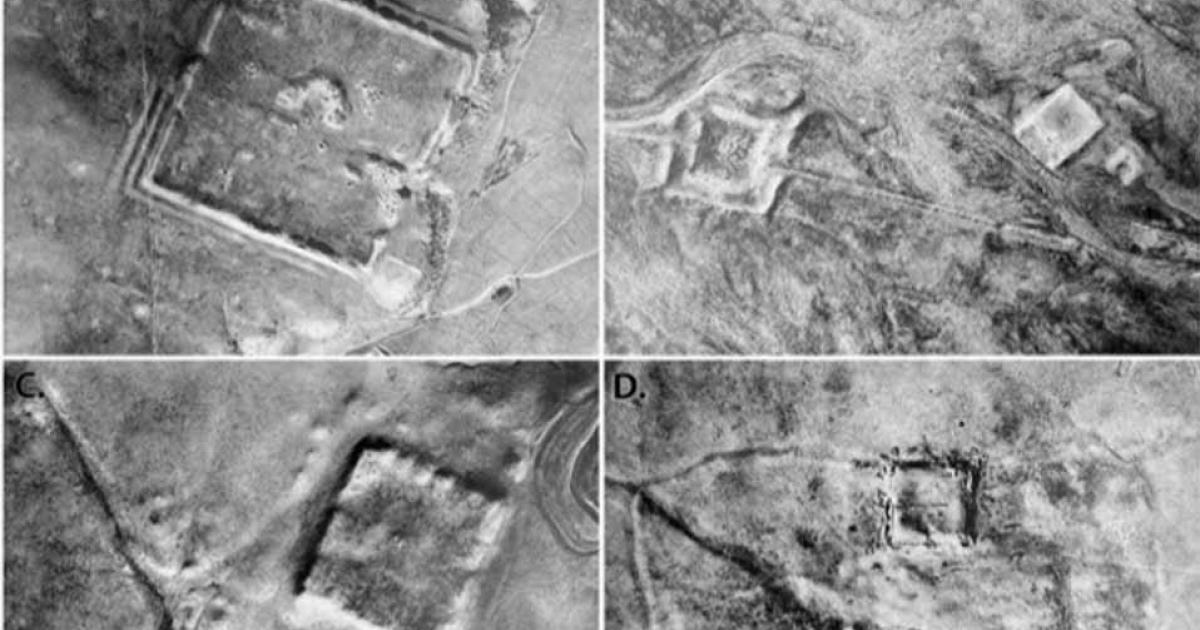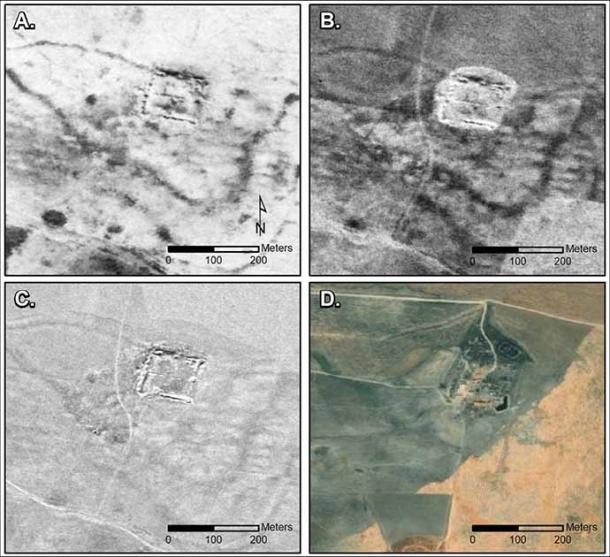
Declassified Cold War Spy Satellite Images Reveal Roman Forts In Syria and Iraq
In their examination of aerial photographs from the 1960s and 70s, archaeologists have identified 396 uncharted Roman forts in the Syrian and Iraqi regions along the Syrian steppe, from “the world’s first spy satellite programs”. These photographs have inadvertently revealed new insights into the Roman Empire's operations, emerging from declassified Cold War spy satellite images. What has emerged includes a plethora of previously unknown forts, causing an entire re-evaluation of life on the Roman frontier!
The finds, published in the latest edition of Antiquity, point to a significant number of structures lost forever, likely destroyed or damaged over recent decades due to various factors like agricultural expansion, urban development, and the impact of wars.
- The Roman Legions: The Organized Military Force Of The Roman Empire
- Roman Fort Discovered Hidden Beneath English Bus Station

Castellum at Tell Brak from evolving images over the years: A) CORONA (1102, 17 December 1967); B) CORONA (1105, 4 November 1968); C) HEXAGON (1204, 17 November 1974); and D) modern satellite imagery (© ESRI and Maxar Technologies) (figure by authors; CORONA and HEXAGON imagery courtesy US Geological Survey/Antiquity Publications Ltd).
Wall or Road? Examining The Traditional Belief
In 1934, Antoine Poidebard, a pioneering French Jesuit explorer who utilized aerial archaeology from his biplane, conducted a survey of the region, documenting a string of 116 forts. Until now, historians believed that these forts were erected as part of a defensive line to safeguard the eastern province of the empire from Arab and Persian invasions, as well as marauding nomadic tribes with a penchant for capturing and enslaving.
This discovery has raised the question by the authors: "Was it a wall or a road?"
The discovery of such a large number of forts with their widespread distribution challenges this traditional notion that these structures were primarily erected for defensive purposes to keep enemies at bay. The new evidence suggests that these forts likely served as facilitators of safe passage for caravans and travelers along routes that experienced substantial nonmilitary traffic.
- Study Reveals Lasting Prosperity Along the Roman Road Network
- The Third Punic War: Rome's Triumph, Carthage's Tragedy

Sample of newly documented complex forts. (figure by authors; CORONA imagery courtesy US Geological Survey/Antiquity Publications Ltd)
The authors suggest that these forts were more likely to be outposts and havens, fostering cooperation and security, rather than being hostile barriers designed solely for defense, changing the ways in which we see the Roman Empire. This reinterpretation underscores the Roman Empire's emphasis on trade, communication, and interaction with regions outside their direct control.
“Since the 1930s, historians and archeologists have debated the strategic or political purpose of this system of fortifications,” said the lead author of the research, Prof Jesse Casana, of Dartmouth college in New Hampshire, US, in a press release. “But few scholars have questioned Poidebard’s basic observation that there was a line of forts defining the eastern Roman frontier.”
The 396 newly uncovered sites, concealed by modern development, are distributed broadly from east to west, countering the notion that these forts constituted a north-south border wall. Researchers now hypothesize that these forts were constructed to facilitate cross-border trade, safeguarding caravans traveling between the eastern provinces and non-Roman territories while also promoting communication between the east and west.

Map showing distribution of forts as discovered by Poidebard. (Casana et al. Antiquity Publications Ltd)
The forts spanned approximately 116,000 square miles (300,000 square kilometers), “extending from Mosul, on the Tigris River in Iraq, through Ninawa province, across the Khabur and the Balikh valleys, continuing to the semi-arid plains west of the Euphrates River, leading to western Syria and the Mediterranean,” according to the study.
High-Resolution Images: Declassified Data
The high-resolution images analyzed in the study were captured during flyovers conducted by satellites from two US military programs: the Corona Project, which operated from 1960 to 1972, and Hexagon, active from 1971 to 1986, reports CNN. It is noteworthy that the Corona Project's images were declassified in 1995, while the photos from the Hexagon program were made available to the public in 2011.
These images obtained from the Hexagon and Corona programs are of immense value to archaeologists due to their ability to preserve snapshots of landscapes that have subsequently undergone rapid disruption and transformation. Based on early estimates, the scientists reckon that these forts sprung up between the 2nd and 6th centuries AD
Prof. Casana states:
"We were only able confidently to identify extant archaeological remains of 38 of Poidebard's 116 forts. In addition, many of the likely Roman forts we have documented in this study have already been destroyed by recent urban or agricultural development, and countless others are under extreme threat."
Casana anticipates that the careful analysis of future spy data and imagery has enormous potential for future historical revelations.
Top image: A sample of Poidebard’s (1934) aerial photographs: A) fort at Qreiye; B) Roman fort and medieval caravanserai at Birke; C) fort at Tell Zenbil; and D) castellum at Tell Brak. Source: Casana et al. Antiquity Publications Ltd
By Sahir Pandey
References
Casana, J., et al. 2023. A wall or a road? A remote sensing-based investigation of fortifications on Rome's eastern frontier. Antiquity. Available at: https://doi.org/10.15184/aqy.2023.153.
Davies, C. 2023. Cold war satellite images reveal hundreds of unknown Roman forts. Available at: https://www.theguardian.com/science/2023/oct/26/cold-war-satellite-images-hundreds-unknown-roman-forts.
Weisberger, M. 2023. Spy satellite photos reveal hundreds of long-lost Roman forts, challenging decades-old theory. Available at: https://edition.cnn.com/2023/10/25/world/roman-forts-spy-satellite-photos-scn/index.html.
















